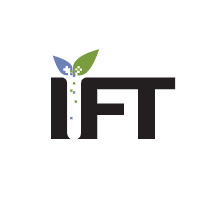Get a Taste of Cooking Up Science at IFT FIRST
Innovative ingredients and culinary science will come together in Cooking Up Science demonstrations conducted by professional chefs representing four ingredient companies at the IFT FIRST food expo on Monday and Tuesday.
Innovative ingredients and culinary science will come together in Cooking Up Science demonstrations conducted by professional chefs representing four ingredient companies at the IFT FIRST food expo on Monday and Tuesday.
Chef Charlie Baggs of Culinary Innovations will serve as the Cooking Up Science host, sharing myriad creative ways that ingredients can end up on our plates. Here’s a closer look at what’s on the menu for these fun, high-energy, 30-minute cooking shows on the Cooking Up Science stage in the Destination IFT area of the expo.
1 p.m. – 1:30 p.m. Monday, July 11
Ajinomoto Health & Nutrition North America
Chef Christopher Koetke will demonstrate strategies for lowering sodium, reducing food costs, and enhancing flavor and texture by harnessing umami, kokumi, and enzyme technologies.
2 p.m. – 2:30 p.m. Monday, July 11
Gamay Food Ingredients
Ben Zirbel, innovation manager, and Dave Caulfield, director of research and development, will take the stage for a presentation that highlights some of the ingredients in the Gamay portfolio.
1 p.m. – 1:30 p.m. Tuesday, July 12
PROVA US
PROVA Corporate Executive Chef Gary Patterson will create flavorful beverages and baked goods, including Caramel Boba Cold Brew Coffee and Madagascar Vanilla Bean Whoopie Pies. PROVA’s Applications Lab Manager Brian Wilson and Chef Baggs will join Chef Patterson on stage.
2 p.m. – 2:30 p.m. Tuesday, July 12
Pulse Canada
Chef James Bickmore-Hutt, representing Pulse Canada, will share recommendations on improving the functionality of batter and breading systems, meat products, and pasta formulations with the addition of lentil flour.
Digital Exclusives

10 Food Trend Predictions for 2022
The editors at Food Technology magazine, published by the Institute of Food Technologists (IFT), have announced their predictions for the hottest food trends for 2022.
Food Technology Articles

How to Formulate for Food Intolerances
In this column, the author describes the global prevalence of food intolerances and provides insight into state-of-science ingredient replacement and removal methods when formulating gluten-free and lactose-free foods.

Vickie Kloeris Shares NASA Experiences in New Book, Consumers Are Confused About Processed Foods’ Definition
Innovations, research, and insights in food science, product development, and consumer trends.

Top 10 Functional Food Trends: Reinventing Wellness
Consumer health challenges, mounting interest in food as medicine, and the blurring line between foods and supplements will spawn functional food and beverage opportunities.

Whipping Up a Bright New Idea
A profile of whipped cream category innovator Whipnotic.

Better-for-you products on display at Natural Products Expo West
A photo overview of products shared at the 2024 Natural Products Expo West in Anaheim, Calif.
Recent Brain Food

A New Day at the FDA
IFT weighs in on the agency’s future in the wake of the Reagan-Udall Report and FDA Commissioner Califf’s response.
Members Say IFT Offers Everything You Need to Prepare for an Uncertain Future
Learn how IFT boosts connections, efficiencies, and inspiration for its members.

More on the FDA's Food Traceability Final Rule
In a new white paper, our experts examine the FDA’s Food Traceability Final Rule implications—and its novel concepts first proposed by IFT.
Job Satisfaction in the Science of Food is High but Hindered by Pain Points
IFT’s 2022 Compensation and Career Path Report breaks it down.

